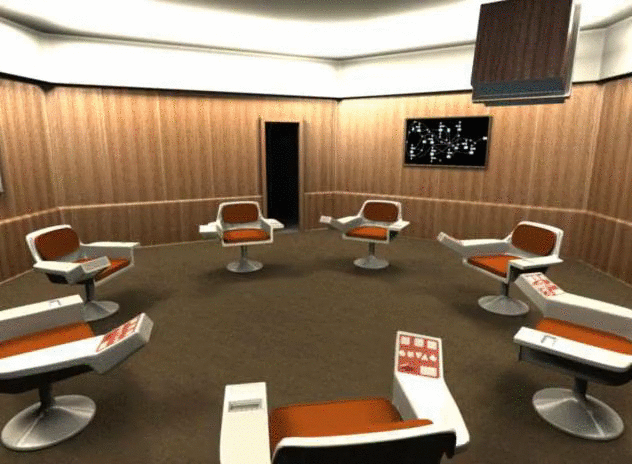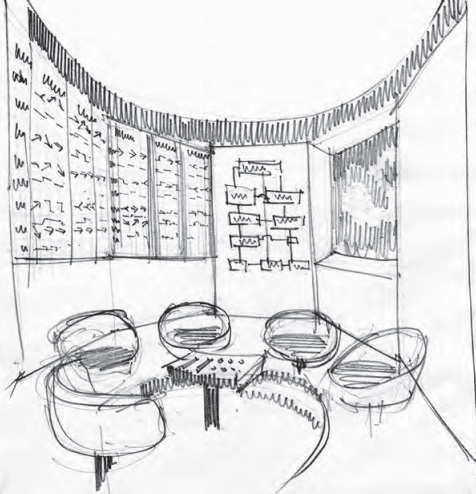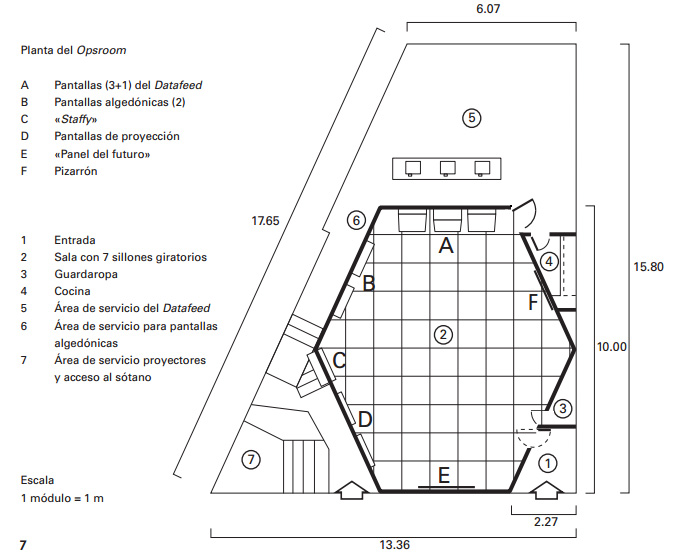Project Cybersyn was a Chilean project from 1971–1973 during the presidency of Salvador Allende aimed at constructing a distributed decision support system to aid in the management of the national economy. The project consisted of four modules: an economic simulator, custom software to check factory performance, an operations room, and a national network of telex machines that were linked to one mainframe computer - wikipedia ![]()
# Podcast
There is a great podcast on the history of Project Cybersyn over at 99percentinvisible.org ![]()

This animated gif is the “operations room” (or: opsroom) was the physical interface for a complex system called Cybersyn. It was an ambitious project in technology and design meant to help Chile’s socialist economy succeed.
http://feeds.99percentinvisible.org/~r/99percentinvisible/~5/wC76ELhuJts/230-Project-Cybersyn.mp3
99% Invisible - 99percentinvisible.org ![]()
# Theory
Project Cybersyn was based on viable system model theory and a neural network approach to organizational design, and featured innovative technology for its time: it included a network of telex machines (Cybernet) in state-run enterprises that would transmit and receive information with the government in Santiago.
Information from the field would be fed into statistical modeling software (Cyberstride) that would monitor production indicators (such as raw material supplies or high rates of worker absenteeism) in real time, and alert the workers in the first case, and in abnormal situations also the central government, if those parameters fell outside acceptable ranges.

The information would also be input into economic simulation software (CHECO, for CHilean ECOnomic simulator) that the government could use to forecast the possible outcome of economic decisions. Finally, a sophisticated operations room (Opsroom) would provide a space where managers could see relevant economic data, formulate responses to emergencies, and transmit advice and directives to enterprises and factories in alarm situations by using the telex network.

The principal architect of the system was British operations research scientist Stafford Beer, and the system embodied his notions of organisational Cybernetics in industrial management. One of its main objectives was to devolve decision-making power within industrial enterprises to their workforce in order to develop self-regulation of factories.
# See also - Viable system model - Stafford Beer - Cybernetics - Conversation for Action - Fernando Flores